Abstract
Experimental inoculation of dogs with the A/Hong Kong/68 influenzavirus resulted in subclinical infection. The virus was readily passed to contacts in the same cage when the latter were exposed in the same inoculation room 24 hours after experimental infection. Removing the site of contact to a noncontaminated room or delaying contact until 48 hours after experimental inoculation greatly reduced the possibility of infection in contact animals. A survey of 271 canine serum samples obtained after a human epidemic from different geographical areas of the USA and the United Kingdom showed that 5.9% of the samples were positive; no positive reactions were found among 111 pre-epidemic samples. These studies demonstrated the laboratory and natural susceptibility of dogs to the Hong Kong variant and suggest the possible role of dogs in the epidemiology of human influenza.
Full text
PDF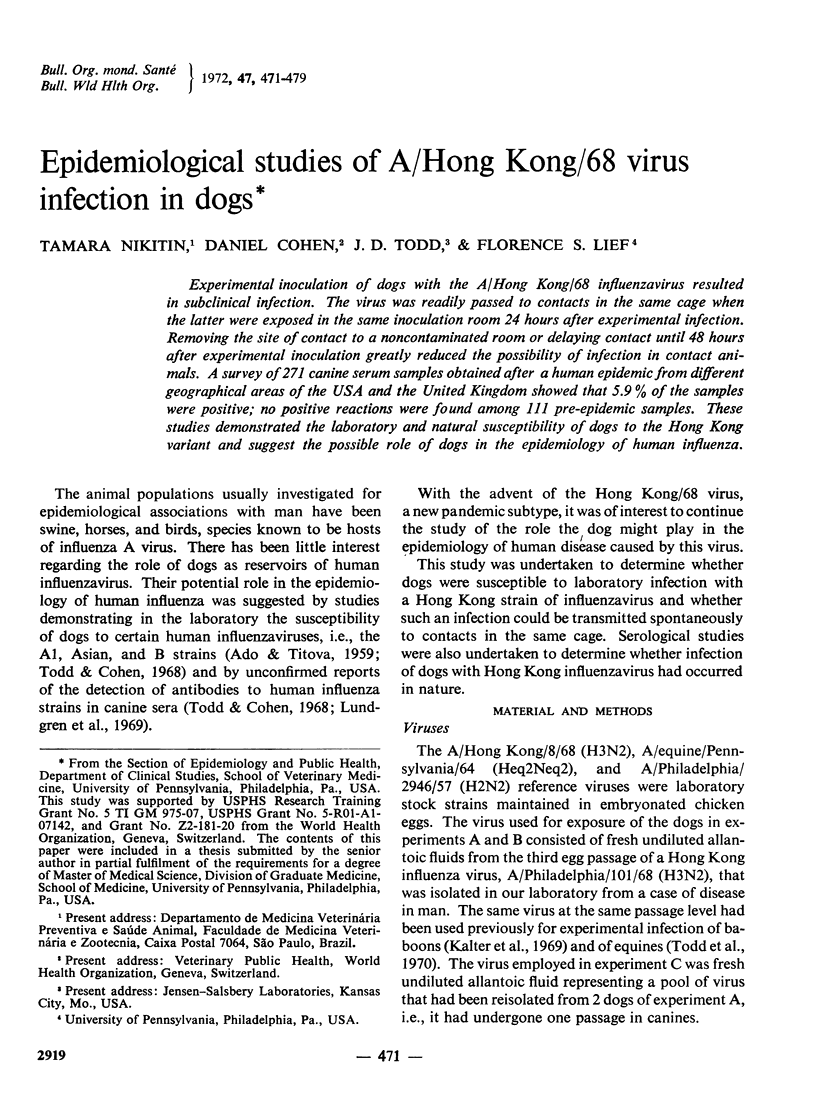
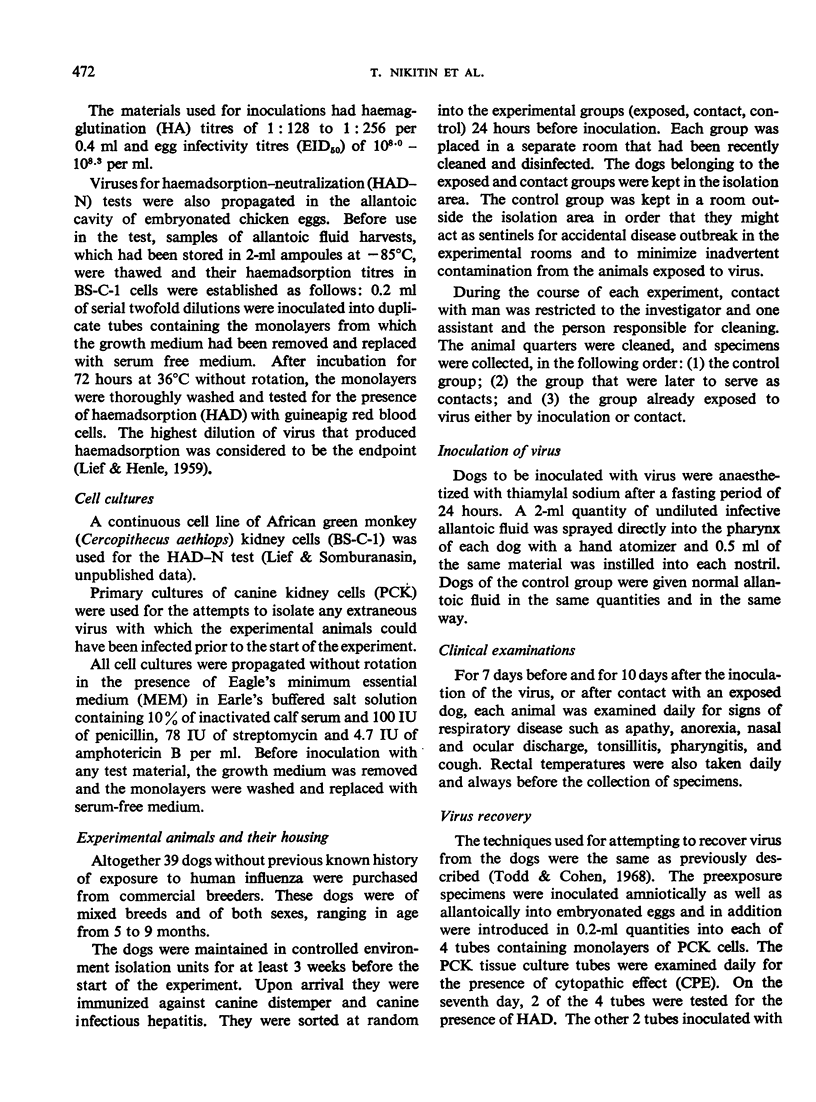
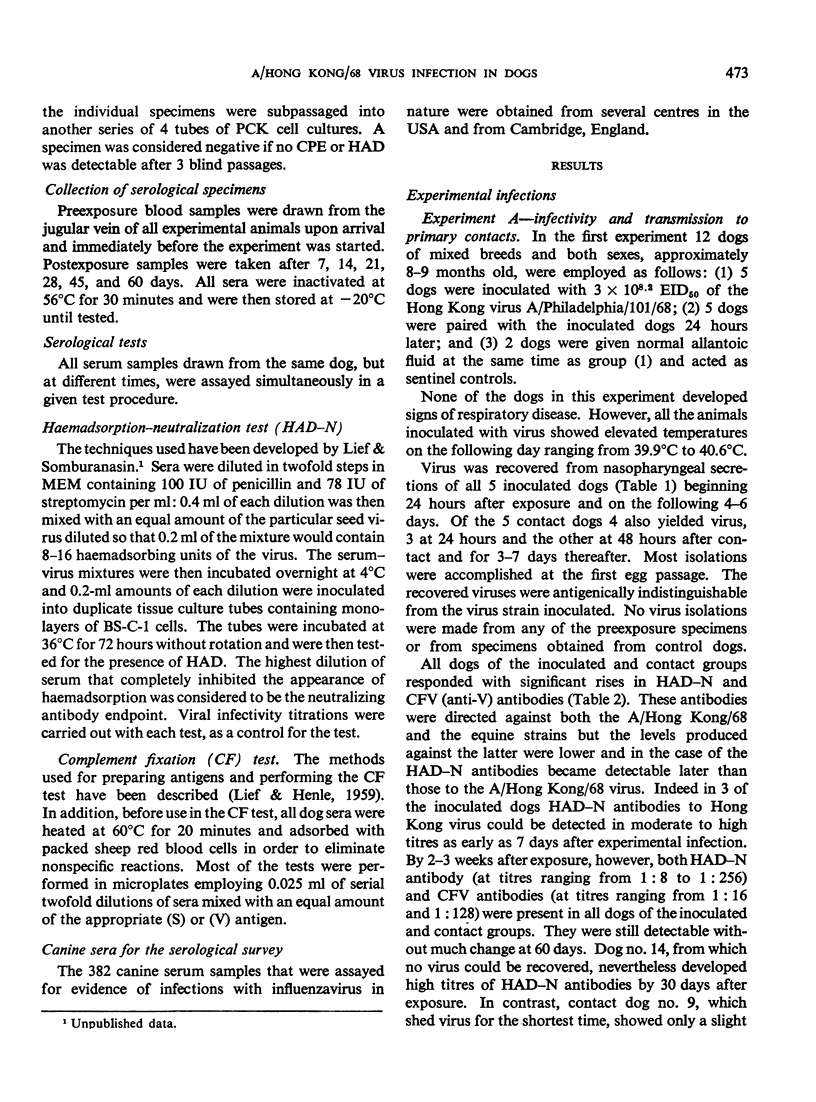
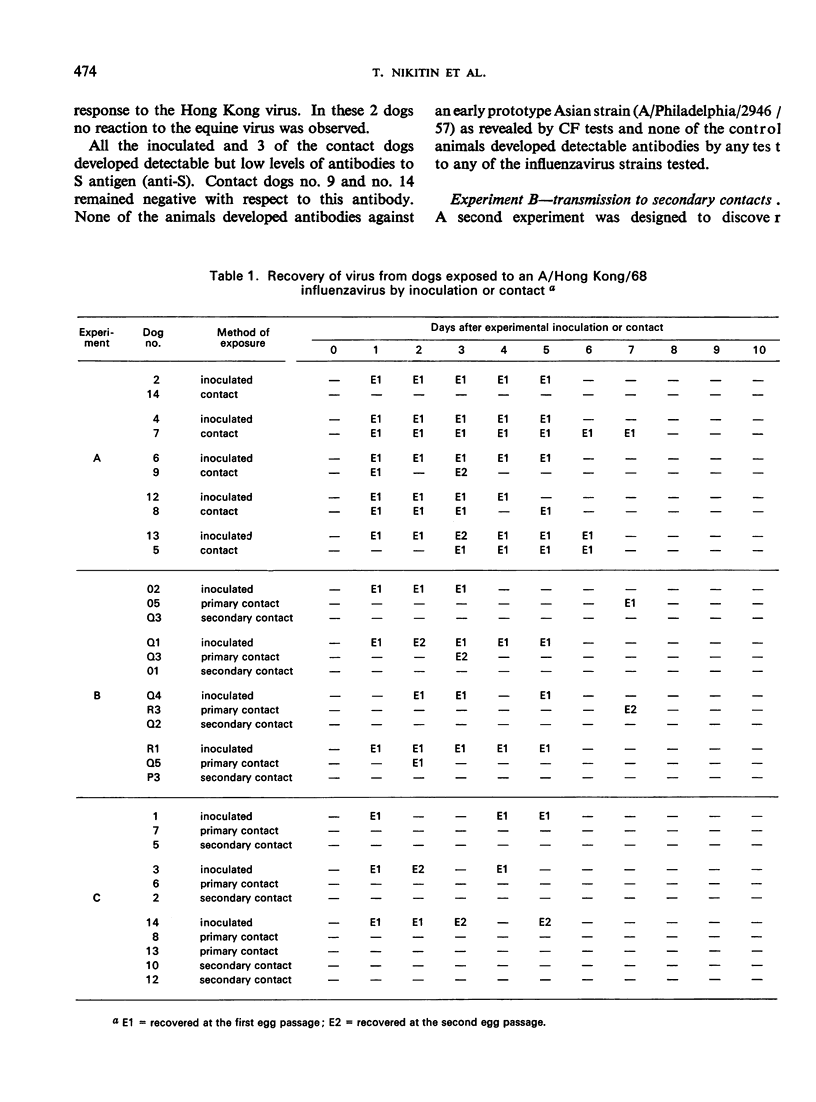
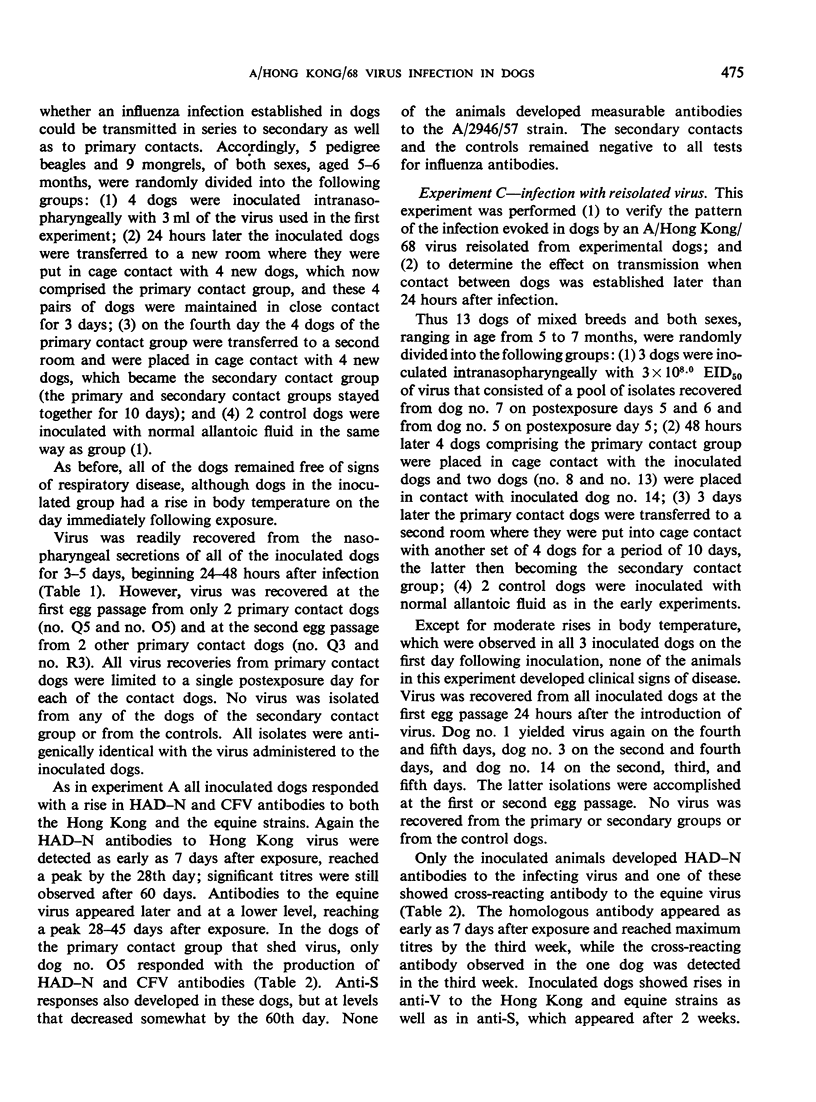
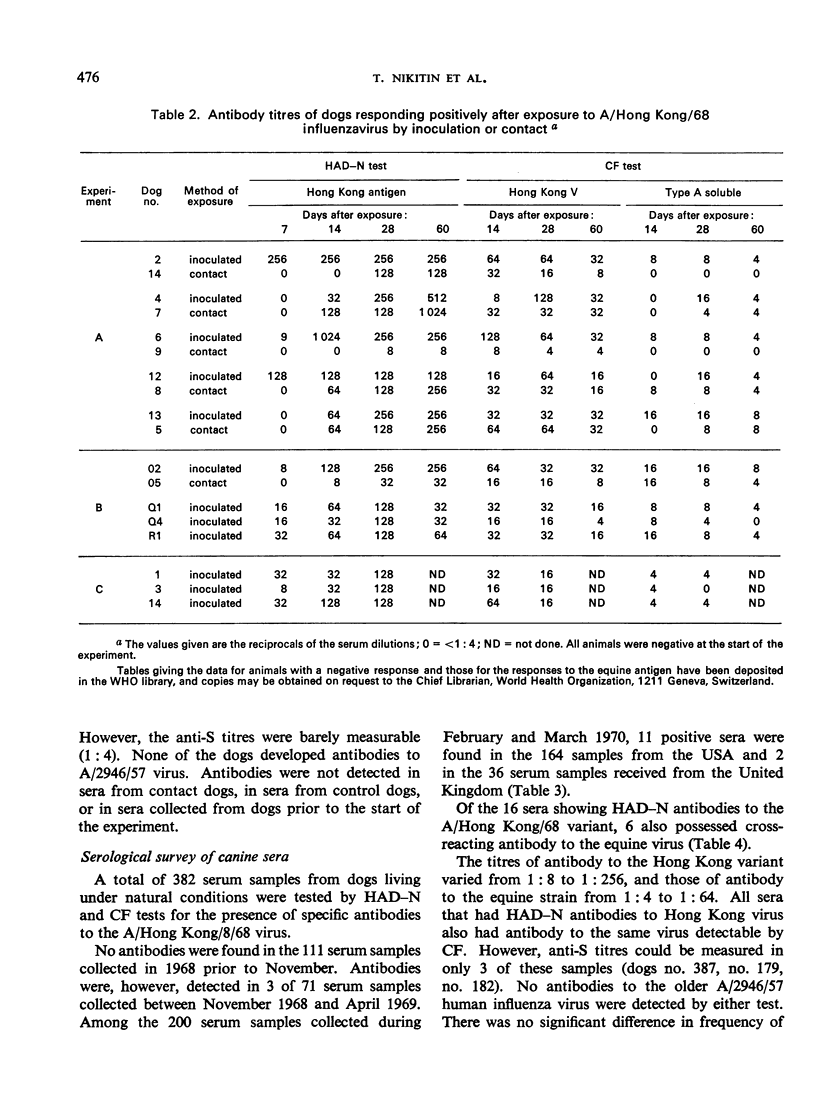
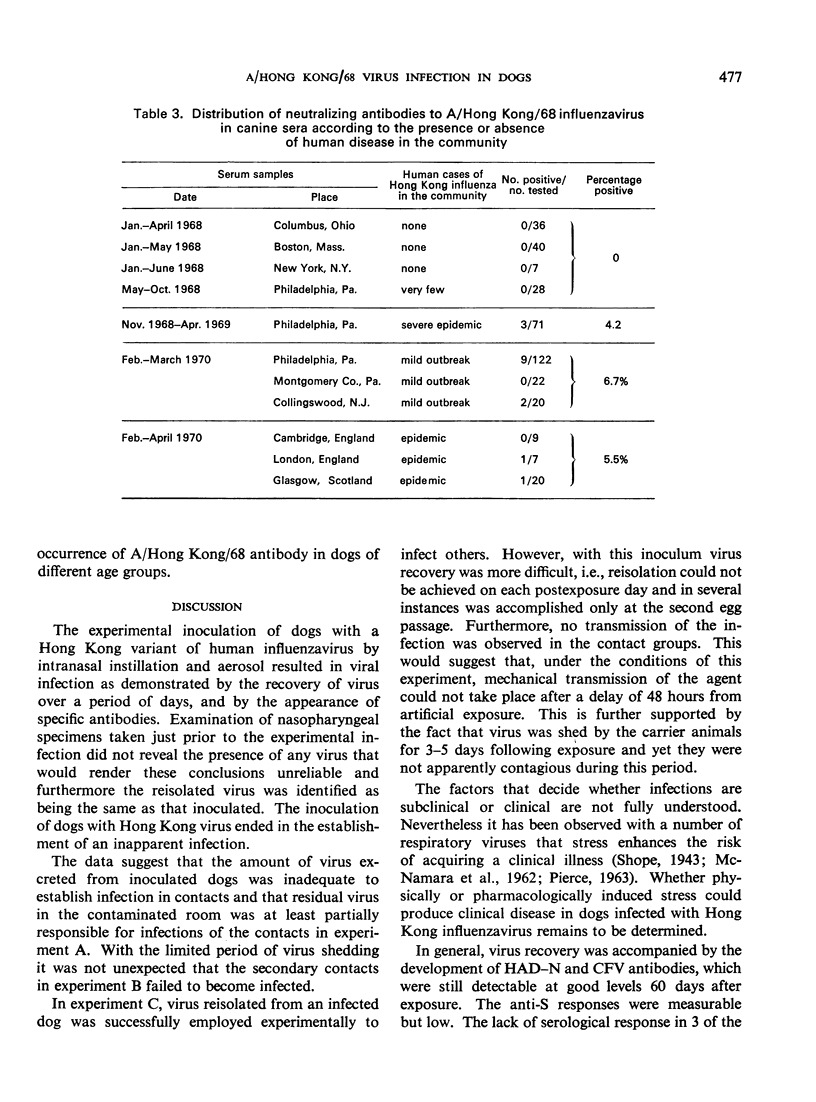
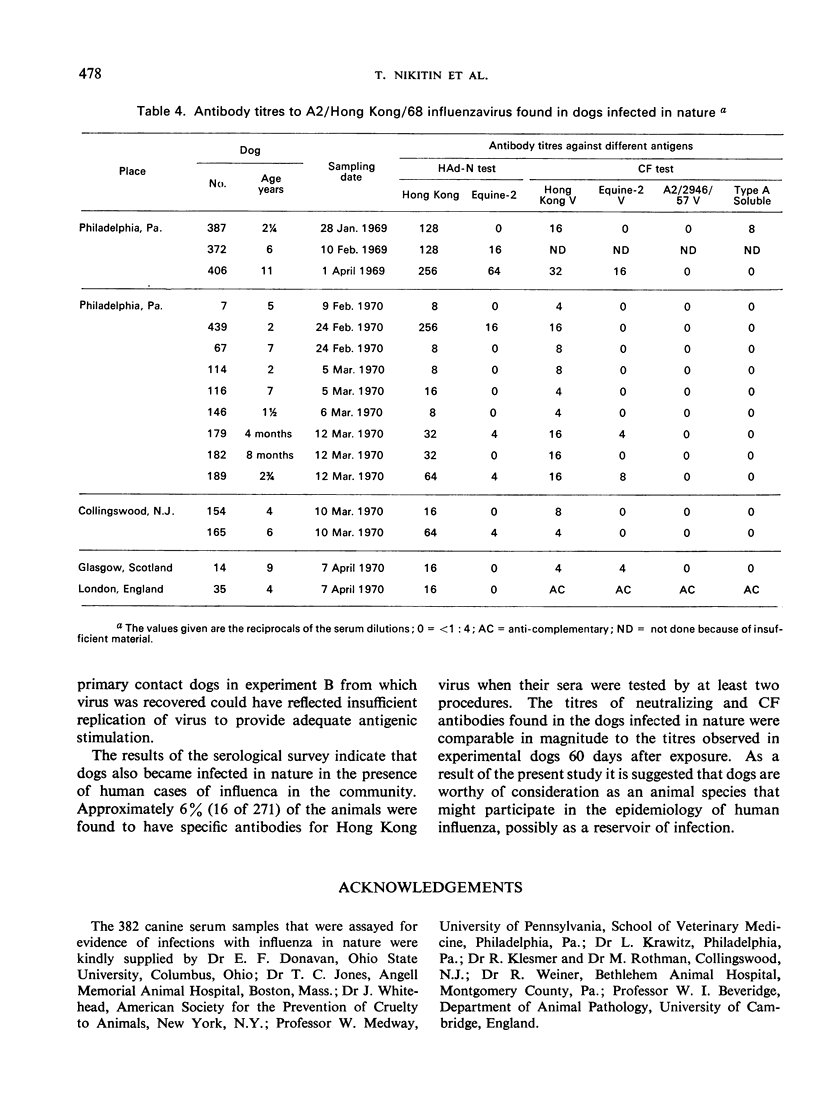
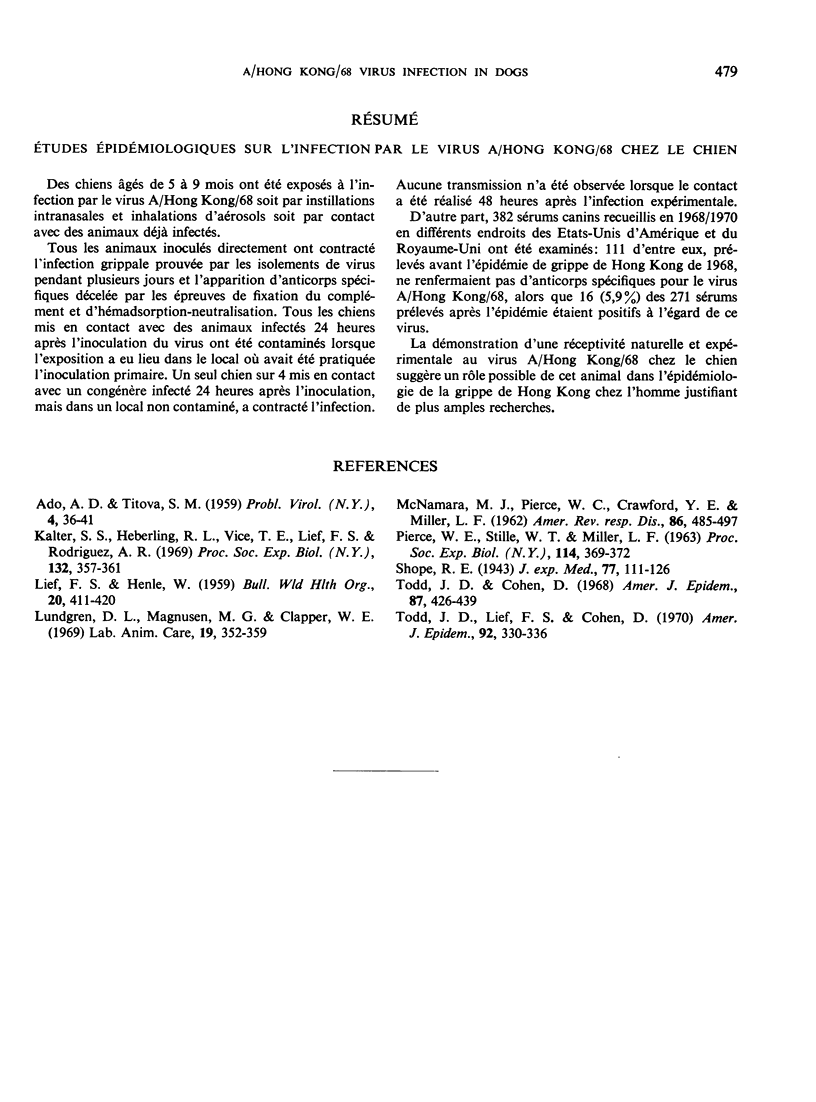
Selected References
These references are in PubMed. This may not be the complete list of references from this article.
- Kalter S. S., Heberling R. L., Vice T. E., Lief F. S., Rodriguez A. R. Influenza (A2-Hong Kong-68) in the baboon (Papio sp.). Proc Soc Exp Biol Med. 1969 Oct;132(1):357–361. [PubMed] [Google Scholar]
- LIFE F. S., HENLE W. Methods and procedures for use of complement-fixation technique in type- and strain-specific diagnosis of influenza. Bull World Health Organ. 1959;20(2-3):411–420. [PMC free article] [PubMed] [Google Scholar]
- Lundgren D. L., Magnuson M. G., Clapper W. E. A serological survey in dogs for antibody to human respiratory viruses. Lab Anim Care. 1969 Jun;19(3):352–359. [PubMed] [Google Scholar]
- MCNAMARA M. J., PIERCE W. E., CRAWFORD Y. E., MILLER L. F. Patterns of adenovirus infection in the respiratory diseases of naval recruits. A longitudinal study of two companies of naval recruits. Am Rev Respir Dis. 1962 Oct;86:485–497. doi: 10.1164/arrd.1962.86.4.485. [DOI] [PubMed] [Google Scholar]
- PIERCE W. E., STILLE W. T., MILLER L. F. A PRELIMINARY REPORT ON EFFECTS OF ROUTINE MILITARY INOCULATIONS ON RESPIRATORY ILLNESS. Proc Soc Exp Biol Med. 1963 Nov;114:369–372. doi: 10.3181/00379727-114-28680. [DOI] [PubMed] [Google Scholar]
- Shope R. E. THE SWINE LUNGWORM AS A RESERVOIR AND INTERMEDIATE HOST FOR SWINE INFLUENZA VIRUS : III. FACTORS INFLUENCING TRANSMISSION OF THE VIRUS AND THE PROVOCATION OF INFLUENZA. J Exp Med. 1943 Feb 1;77(2):111–126. doi: 10.1084/jem.77.2.111. [DOI] [PMC free article] [PubMed] [Google Scholar]
- Todd J. D., Cohen D. Studies of influenza in dogs. I. Susceptibility of dogs to natural and experimental infection with human A2 and B strains of influenza virus. Am J Epidemiol. 1968 Mar;87(2):426–439. doi: 10.1093/oxfordjournals.aje.a120833. [DOI] [PubMed] [Google Scholar]
- Todd J. D., Lief S., Cohen D. Experimental infection of ponies with the Hong Kong variant of human influenza virus. Am J Epidemiol. 1970 Nov;92(5):330–336. doi: 10.1093/oxfordjournals.aje.a121214. [DOI] [PubMed] [Google Scholar]


